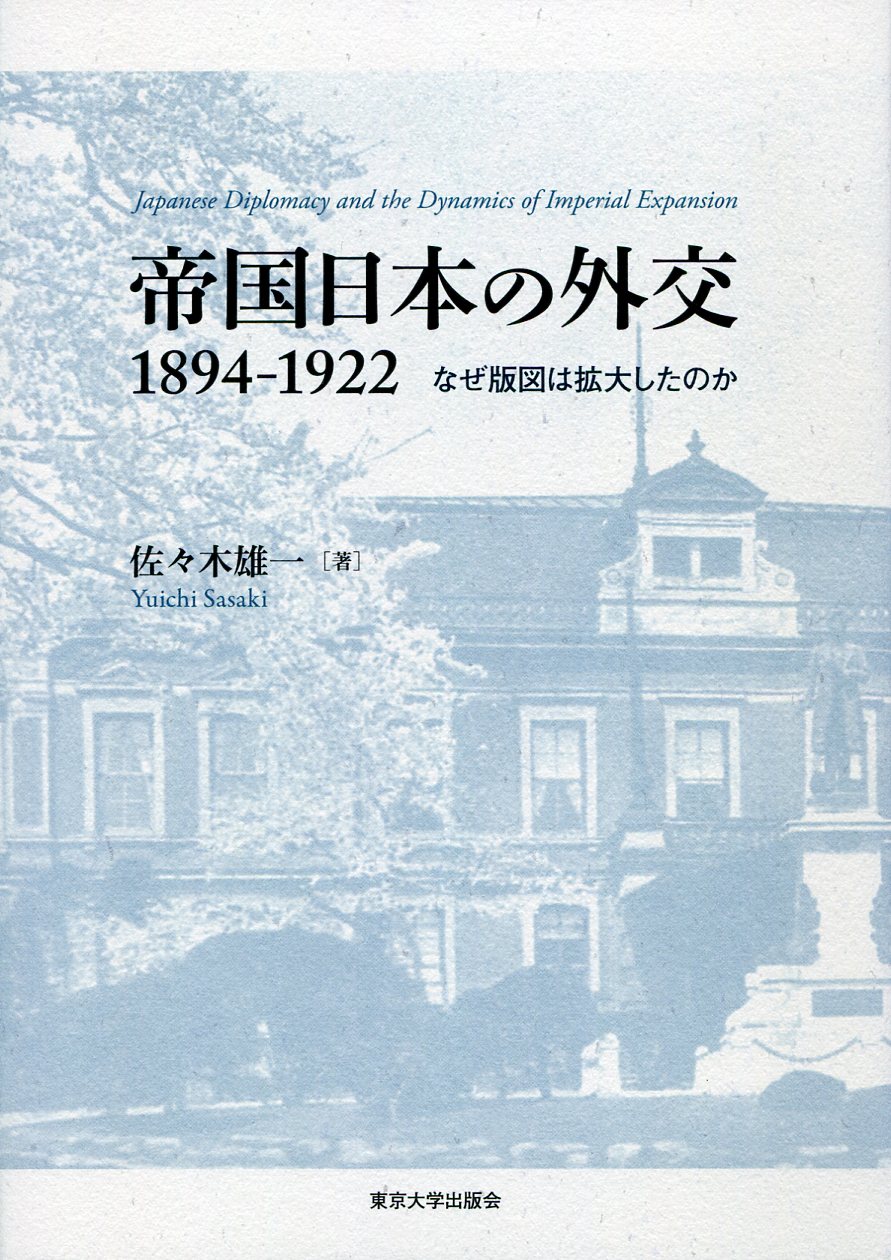
Title
Teikoku Nihon no Gaiko, 1894-1922: Naze Hanto wa Kakudai Shitanoka (Japanese diplomacy and the dynamics of imperial expansion, 1894-1922)
Size
452 pages, A5 format
Language
Japanese
Released
March 28, 2017
ISBN
978-4-13-036260-3
Published by
University of Tokyo Press
Book Info
See Book Availability at Library
Teikoku Nihon no Gaiko, 1894-1922: Naze Hanto wa Kakudai Shitanoka
Japanese Page
This book analyzes Japanese diplomacy and the dynamics of its imperial expansion from 1894 to 1922. In 1894, the Sino-Japanese War of 1894–95 started. In 1922, the Washington Conference was closed, Japan returned Shandong province to China, and Japanese troops withdrew from Siberia. The year 1922 was the real end of World War I for Japan.
In general, Japan’s imperial expansion has been associated with events after the Manchurian Incident—that is, the Manchurian Incident in 1931, the Sino-Japanese War of 1937, and the Asia-Pacific War. It is believed that the driving force behind Japan’s imperial expansion was the military faction.
However, Japan’s continuous imperial expansion also occurred from 1894 to 1922. As a result of the Sino-Japanese War, which began in July 1894, Japan acquired Taiwan and its neighboring islands. In addition, Japan acquired the South Sakhalin after the Russo-Japanese War, annexed Korea in 1910, and virtually possessed the South Sea Islands (Micronesia) all through World War I. Also, Japan had huge interests, rights, privileges, and power in the northeast district of China (Manchuria) during that period, and it occupied the North Sakhalin and Shandong Peninsula for several years.
Current studies on Japanese imperialism chiefly pay attention to its social and cultural spheres, but my book focuses on the decision-making process in the Japanese government and the mindset of decision-makers. This book provides a new explanation of the dynamics of Japan’s imperial expansion with such a classical approach.
The key players in this book are leading Japanese diplomats, who were foreign ministers and potential candidates for the post of foreign minister. Unlike in Britain or France, where there was a clear distinction between diplomatic officials and the foreign minister, most Japanese foreign ministers had served as ambassador/minister to a major power or vice minister for foreign affairs before they took office as foreign minister. Also, they sometimes returned to the post of ambassador/minister to a major country after their retirement from the office of foreign minister. Leading diplomats, including both foreign ministers and influential diplomatic officials, played a critical role in the Japanese decision-making process on foreign policy. They formed the principles of modern Japanese diplomacy—that is, interest, justifiability, and “fairness”—and such notions were the base of Japan’s conformity to the international order and, at the same time, led its imperial expansion.
(Written by: SASAKI Yuichi / March 25, 2020)




 eBook
eBook